#violet bick
Explore tagged Tumblr posts
Text
somebody pls, for the love of god, do a gif set of Violet from It's a Wonderful Life flirting w George in her pink dress and Galinda from Wicked flirting w Fiyero in her pink dress
#i'm begging y'all#anyone who has gif making abilities#and adores these two movies as much as i do#in the spirit of christmas#and wicked season#it's a wonderful life#movies#violet bick#george bailey#james stewart#gloria grahame#wicked 2024#wicked movie#wicked the musical#wicked#wicked glinda#wicked musical#wicked part one#wicked the movie#galinda upland#wicked film#glinda#glinda the good#glinda the good witch#glinda upland#ariana grande glinda#galinda#wicked galinda#ariana grande butera#ariana grande
28 notes
·
View notes
Text
#It's A Wonderful Life#Movies#Celebs#1947#1940s#Donna Reed#Gloria Grahame#Mary Hatch Bailey#Violet Bick#SimpaiCelebs
1 note
·
View note
Text

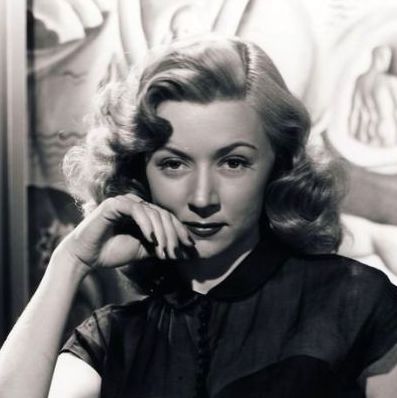
Propaganda
Lauren Bacall (To Have and Have Not, The Big Sleep, Key Largo)—"Just put your lips together...and blow" excuse me ma'am i'm briefly going to turn into a kettle. She's the quintessential Femme Fatale who may betray me in the end but I'd let her it'd be worth it
Gloria Grahame (It's a wonderful life, Oklahoma, Human desire, The Cobweb)—I'm just going to link to this Film Comment article by Donald Chase, who makes the argument more eloquently than I can, although I think Grahame's Ado Annie is more than just the 'flirtatious goofus' he offhandedly describes her as. Between that role and Violet Bick in 'It's a Wonderful Life" she's played two of cinemas best irrepressibly horny ladies. That would be legacy enough for our hot vintage queen, but she is also GLORIOUS in 'In a Lonely Place' and consistently pulls focus from her co-star Humphrey Bogart, famously one of the most charismatic leading men of his day. I think she had even more, and hotter, chemistry with him than he ever had with Lauren Bacall, which is saying a lot I know. Anyway, your honor I love her and I want her to win it all.
This is round 2 of the tournament. All other polls in this bracket can be found here. Please reblog with further support of your beloved hot sexy vintage woman.
[additional propaganda submitted under the cut.]
Lauren Bacall:
youtube
"She is soooo neat. And hot. And everything. That one scene in To Have and Have Not where she says "you know how to whistle don't you? You just put your lips together and blow" altered my brain chemistry during media archaeology class and here we are."
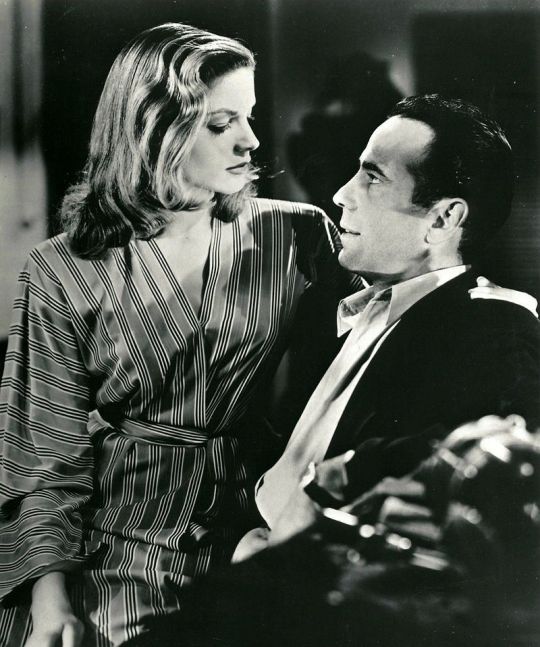
"Lauren Bacall was a major lesbian awakening for me. Every picture of her makes it look like she’s about to destroy you physically and emotionally (why is that so hot, I may need help). She had incredible long running chemistry with her husband, Humphrey Bogart, but was an absolute star in her own right. I’ll never be over my crush on her."

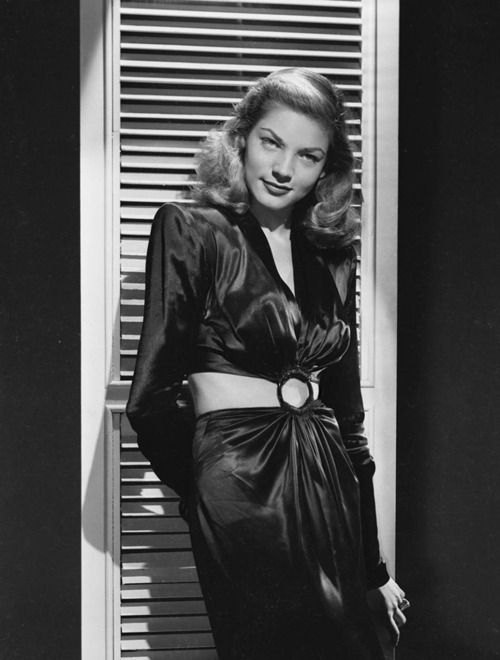
"She's got that confident, no-nonsense air about her. She's a boss babe who knows what she wants and gets it DONE. Staunch liberal Democrat her whole life. Campaigned for RFK. From Wikipedia: "In a 2005 interview with Larry King, Bacall described herself as "anti-Republican... A liberal. The L-word". She added that "being a liberal is the best thing on Earth you can be. You are welcoming to everyone when you're a liberal. You do not have a small mind."" Beautiful hair. Beautiful eyes. Beautiful lips. She's just beauty. LISTEN TO HER VOICE. TELL ME THAT'S NOT THE STUFF THAT DREAMS ARE MADE OF."

"HER VOICE. Like yeah, she was absolutely stunning but oh my god, I'm obsessed with her voice"
"A gorgeous lady inside and out. One half of an absolute power couple with Humphrey Bogart, tended to him and other actors suffering from malaria whilst filming the African Queen, generally radiated grace and poise throughout her life. Also her last role was in Family Guy so she needs justice for that"
youtube
"The VOICE, the SLINK, the EYES. Woof."
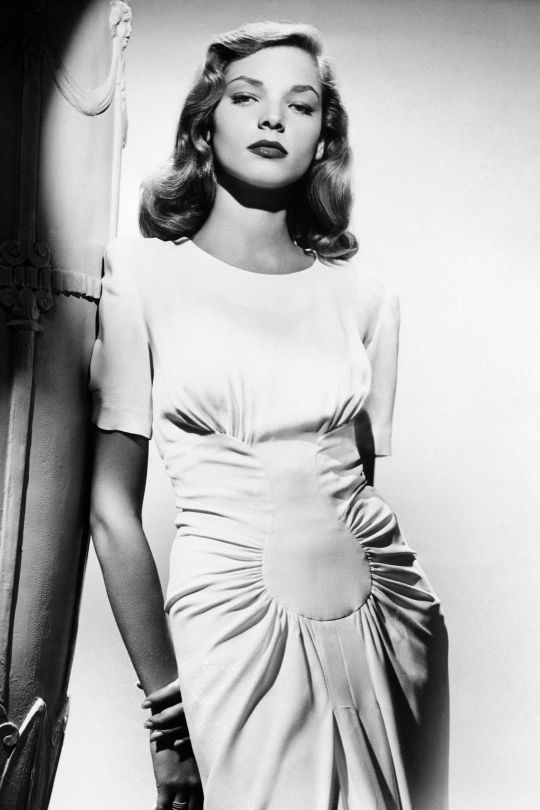
"She was stunning. Tall and beautiful with a distinctive voice and able to carry her own in a male dominated field. She won the heart of millions, including one of Hollywood's most iconic leading men, Humphrey Bogart. Their story was the stuff of legends, and the chemistry between them was apparent in the multiple films they started in together. She personified the film noir dame and yet she also adapted as Hollywood changed. Her career spanned decades, and she was honored multiple times."
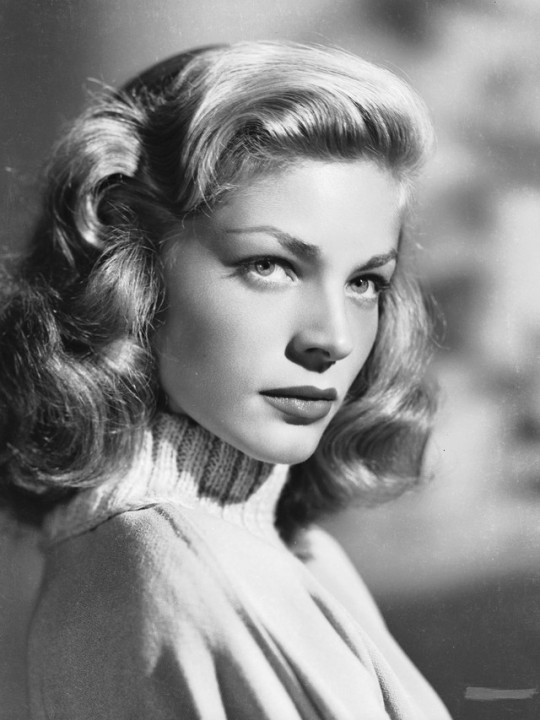
Gloria Grahame:

Absolute Hollywood vamp, who had a fine comedic bone. Died far too young and was depicted by Annette Bening in the stellar Film Stars Don't Die in Liverpool
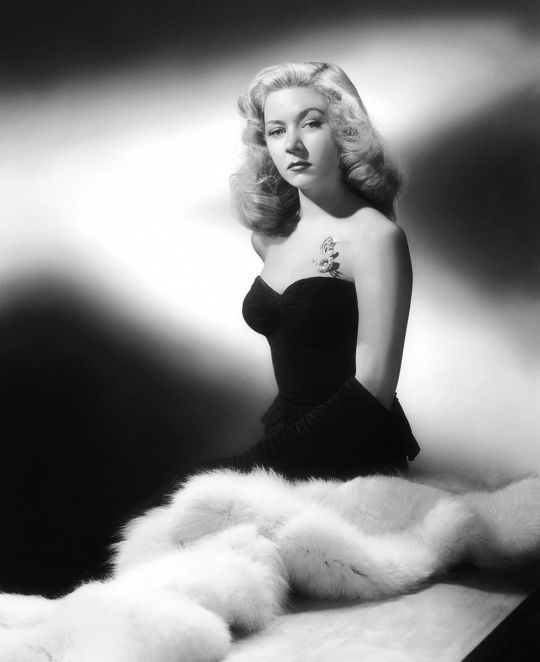
I’ve heard she’s horrendously miscast in Oklahoma (I have not seen it), so if you’re coming in with that framework PLEASE set that aside because gods does this woman shine in a NOIR!! She plays the battered woman more than a full on fatale, but she manages to bring interesting nuance to characters who are written as mere sultry divergences! Also: she’s sultry and an EXCELLENT divergence
She could do sexy, sweet and sinister in the same breath. She was crazy talented and had that lisp that melts me every time.

261 notes
·
View notes
Text
King Dice's folks...
Pearlie🔮 and Bick🖋

Around the late 1890s, Pearlie, a self-proclaimed fortune teller, traveled with a carnival from far seedy Linseed Bay to the vast Inkwell Isles, where dreams (and nightmares) came true, to make a quick buck. There, she met Bick Ballpoint, a shifty lucky charm salesman, returning from another failed sales pitch. They shared stories of their love for money and how they wanted to live the high life. So, they went into business together, she'd read people's fortunes and he'd sell 'em "charms" to make life easier, got married, and had a son.
But as the years grew, so did their lust for riches. The couple only saw their son as free labor, initially keeping him inside doing chores and spending all their money on themselves while he struggled. When their boy began to develop more as both a scammer and a dancer, they felt they had a star on their hands, one that could have them living the high-life for sure...but not if their boy (and his new um... friend) have anything to say about it....!
Now for some Headcanons!!!
Pearlie🔮💋
Had Dice (then named Cubert) when she was 20. She wanted a girl with a pearl head like her. She took every opportunity to hold it over the poor kid ever since.
Dreamed of being an opera singer, but her family pushed her to join their tailoring business. So, she left home at age 16 to make it big. But sadly, for her, genetics caused her voice to change, forcing her to rely on scamming people with her "readings".
Was SUPER extra with her appearance. We're talking about polishing her pearl head until it gleamed, lavish-looking outfits, and only the finest jewelry and makeup she could afford. Cuz she always believed looking important is the same as being important.
Favorite colors are blue and violet.
Was incredibly sly, playing on the Inkwellians' fears and desires for fame and easy living (ironic huh?). She often gave phony fortunes to carnival goers, faked seances for grieving and wealthy families, and had her son perform a little prestidigitation to really sell it (ex. pretending to be a ghost or demon, card tricks, charming people, you name it). Despite how hard he worked, Pearlie never really paid him back that much, being more concerned with buying stuff for herself. This did not bode well when Dice began dreaming of becoming a big star.
Headcanon voice: Alana Bridgewater (y'know the original voice of King Dice)
Bick🖋💼
A traveling salesman known for handing out useless junk. During his trip to Inkwell, he noticed its residents were very superstitious about demons and temptation. So, he decided to disguise his products as means to ward them off, from "potions" made from water and cheap cologne to 3-and-a-half leaf clovers to piano wire to trip "unholy ghosts".
His father left him at an early age. This left him depressed and his mother on edge. More often than not, his mother tried to "make a man out of him" by making him do all the chores in their house; if he refused, he would get a major spanking. This left a damper on Bick's confidence, and he ran away when he was 10.
Your typical carney disposition, always barking out to any potential suckers, using every shady scam he can think of to make a quick buck.
Was picked up by a traveling circus as an assistant once, explaining his carney tendencies.
Often had his son perform little dances or parlor tricks for customers. He always said it was "father-son bonding", but he just wanted a talented boy to make money off of.
Often use his money for gourmet meals, clean-pressed suits, and precious gems for his Pearlie.
Dice certainly inherited some showmanship from this guy but became MUCH more convincing with the Devil's help. He also inherited his skittishness. -_-
Like Dice, Bick also helped his wife in her scams, either handing out his nick-nacks or disguising himself as a demon or spirit. Though he and Pearlie were mostly interested in getting rich, Bick truly did see himself hitting the big time together with her, feeling he's found his soulmate.
Headcanon voice: John Delancey
#pearlie#bick#cuphead ocs#king dice#the cuphead show#renew the cuphead show#pearlie plum#bick ballpointe
16 notes
·
View notes
Text
Fuck, my hand slipped, and now I might be doing an It's a Wonderful Life AU for Han Solo?
Ever since landing in the sleepy town of Bespin Falls as a teen in search of work, Han Solo has wanted nothing more than to leave. And yet, he keeps on finding reasons to stay: A friend in need, a boy in danger, a girl smarter and prettier than anything he’d ever laid eyes on. Until Han finds himself hopelessly in debt to Bespin Falls’ most evil landlord and wishing he’d never been born. Meanwhile, second-class Force ghost Obi-Wan Kenobi needs one more project to earn his wings…
Dramatis personae:
Han Solo as George Bailey
Leia Organa as Mary Bailey nee Hatch
Jacen Solo as Pete Bailey (the speller)
Benjamin Solo as Janey Bailey (the piano player)
Jaina Solo as Susan “Zuzu” Bailey (the sweet one)
Anakin Solo as Tommy Bailey (the baby)
Luke Skywalker as Harry Bailey
Mara Jade as Ruth Bailey, Harry's wife
Chewbacca and Mallatobuck as Pa and Ma Bailey
C-3PO as Uncle Billy Bailey
R2-D2 as Building & Loan Receptionist (Aunt Bailey?)
Obi-Wan Kenobi as Angel Clarence Odbody
Jabba Desilijic Tiure as Mr. Potter the Crooked Banker
Lando Calrissian as Sam Wainwright the Plastics Businessman
Wes Janson as Bert the Cop
Hobbie Klivian as Ernie the Taxi Driver
Qi’ra as Violet Bick the Maybe-Prostitute
Wedge Antillies as Marty Hatch the Matchmaker
Tobias Beckett as Mr. Gower the Pharmacist
Crix Madine as Nick Martini the Barkeeper
#han solo#george bailey#han/leia#star wars#it's a wonderful life#fuuuuck me#the baffling life of bookishbrigitta
8 notes
·
View notes
Text
so I guess I’m going to have to do the violet bick (it’s a wonderful life 1946) brat edits myself huh
1 note
·
View note
Text
Happy Christmas in July!
Transcript below the break.
Hello and welcome back to the Rewatch Rewind! My name is Jane, and this is the podcast where I count down my top 40 most frequently rewatched movies in a 20-year period. Today I will be celebrating Christmas in July by discussing number 18 on my list: Liberty Films and RKO’s 1946 holiday classic It’s a Wonderful Life, directed by Frank Capra, written by Frances Goodrich, Albert Hackett, Frank Capra, and Jo Swerling, based on a story by Philip Van Doren Stern, and starring James Stewart and Donna Reed.
George Bailey (James Stewart) has always had big dreams of traveling and building things, but instead he’s stuck in his small hometown of Bedford Falls, New York, managing the family building and loan business. When his absent-minded Uncle Billy (Thomas Mitchell) misplaces $8,000 of company money, George feels that he is worth more dead than alive and plans to end his life on Christmas Eve, when he is stopped by Clarence Oddbody, Angel 2nd Class (Henry Travers) who has been sent from heaven to save him. George tells Clarence he wishes he’d never been born, so Clarence shows George what the town would be like without him.
As I’ve mentioned before, my family didn’t have a VCR in the ’90s, but we did sometimes watch movies together when they came on TV, so we caught It’s a Wonderful Life pretty much every year. I don’t know exactly how old I was when I first watched it, but I do remember being confused that it was in black and white. Once we finally got a VCR, we taped it one year so we could watch it whenever we wanted, and then eventually we got it on DVD. At some point we decided that it made a good Thanksgiving movie in addition to a Christmas one, since it’s about being grateful for what you have, so I tended to watch it once or twice a year for a while. I’d probably seen it about 10 times before I started keeping track, and then I saw it once in 2003, once in 2004, twice in 2005, once in 2006, three times in 2008, twice in each year from 2009 through 2012, and then once each in 2013 and 2014, and then once in each year from 2020 through 2022. I don’t remember exactly why I took such a long break after 2014, and I think it was probably a combination of factors, but I do remember reading an article probably around then arguing that Bedford Falls actually would have been more fun without George and that he should have gone to jail anyway that kind of ruined the movie for me a bit. While I recognize that there are legitimate criticisms to be made of the story and message and other details (such as the nonsensical decision to make AS2 the abbreviation for Angel Second Class), for me, the good definitely outweighs the questionable.
For one thing, the acting is superb. Everybody’s at the top of their game, with character actors such as Ward Bond, Frank Faylen, and Beulah Bondi doing some of their best work, and some very impressive child acting, particularly from Bobbie Anderson and Karolyn Grimes. Thomas Mitchell knows exactly when to play Uncle Billy’s memory issues for comic relief and when to reveal how devastating they can be. Henry Travers similarly gives the audience a perfect balance of chuckles and tears. Frequent femme fatale Gloria Grahame makes the initially shallow Violet Bick surprisingly sympathetic. The character of Mary Hatch Bailey is also deceptively simple on the surface, but Donna Reed brings her to life with so much warmth and depth and complexity that it takes several rewatches to fully appreciate her. Lionel Barrymore perfectly embodies the evils of capitalist corruption as Potter, in one of the most diabolical villain performances of all time. And then there’s James Stewart. My man Jimmy. I’m kind of surprised I haven’t had an opportunity to talk about him on this podcast before now, since he’s definitely one of my faves. His performance as George Bailey is SO. GOOD! Just thinking about it gives me chills. We see George go from a young man full of hopes and dreams to a frustrated, drained, broken middle aged man at the end of his rope, to a man trying to make sense of the reality of his non-existence who ultimately learns that he’s a better and more important person than he thought he was. It’s a major emotional roller coaster, and Jimmy Stewart absolutely nails every moment of the ride. It’s rare for a Hollywood film to let a male protagonist get anywhere near as emotionally raw and vulnerable as George Bailey is at several points throughout this film, but Stewart was clearly not afraid to cry on screen, and it’s beautiful to watch.
The sets and visual effects are also beautiful and noteworthy. Falling snow on film used to be created with cornflakes painted white, but a new snow effect using fire extinguisher foam mixed with soap and water was developed for It’s a Wonderful Life. Using this allowed the sound to be recorded live, which had been impossible with crunchy cornflakes, and I feel like it enhanced the performances to not have to record the dialogue separately. The Bedford Falls set was one of the longest sets that had ever been made for an American movie, and the streets and buildings do an excellent job of bringing the audience into the town. Apparently three different cinematographers worked on this movie (they kept getting fired due to disagreements with the director), but the look and feel of the film is remarkably consistent and unique. Plenty of movies set in small towns were made during this era, but somehow none of them feel quite like this one. That could just be my own nostalgia, since this was the first one I saw, but there’s just something about Bedford Falls that sets it apart from other movie settings, and that’s a big part of what I love about this movie. The sets and the lighting and the performances are so engrossing that no matter how many times I rewatch it, I still feel like I’m part of the town, and like I’m interacting with the characters, in a fresh and unique way.
It's interesting that I’m talking about two 1946 movies in a row because I think that, like Notorious, It’s a Wonderful Life could really only have been made that year. James Stewart had left Hollywood to fight in World War II and was considering giving up acting for good when Frank Capra asked him to star in this film. Capra had spent the war making documentaries and propaganda films, and this was also his first post-war movie. Now, I’ve never fought in a war, and my parents are baby boomers so I definitely wasn’t around for World War II, but it stands to reason that their wartime experiences significantly impacted the people involved in making this film and were still fresh on their minds. Stewart apparently said that his PTSD and depression from the war helped him relate to George Bailey, and that acting out George’s anger and frustrations was cathartic for him. The US was also at its most anti-fascist at this time, as James and I briefly discussed last week, which I assume is what allowed this movie to be so blatantly anti-capitalist. Building and Loan associations don’t really exist anymore, but based on my understanding of the Bailey business from this movie, they seem kind of like mutual aid mortgages. Because George holds onto this institution, the people of Bedford Falls are able to afford to buy decent homes for themselves. The alternative that Potter wants is everyone paying him exorbitant rent. By capitalist standards, George is a failure, and was incredibly foolish for turning down Potter’s lucrative job offer in the middle of the movie. But the film portrays him as a hero precisely because he values people over money. When he’s at the end of his rope, Potter has the power to save him (especially because he’s the one who has the cash that Uncle Billy lost) but he refuses; it’s George’s friends and family who rally around to help him. And that sounds like something that would have been considered dangerously close to socialism in the McCarthy era. The Hollywood blacklist started in 1947, so I feel like It’s a Wonderful Life couldn’t have been made even a year later than it was without significant modifications.
One of the main focuses of the story is the romance between George and Mary, but I feel like even that is used as a demonstration of the shortcomings of our capitalist society. They are clearly drawn to each other, but George initially tries to pretend otherwise, in large part because he doesn’t feel good enough for her. She has a college education; he does not. Their wealthy friend, Sam Wainwright, is interested in Mary, and George feels like she would be better off with Sam, even though all she wants is George. They spend all their honeymoon money on supporting Building and Loan clients during a bank run, at Mary’s suggestion, but George later regrets that he couldn’t afford to provide for both his clients and his wife. Mary is perfectly happy with their life, but George feels like a failure by society’s standards and can’t see anything else, so he needs Clarence’s reality check to show him that he has always been enough for her. If George wasn’t constantly being bombarded with the message that he should be making more money, that he should have been able to leave Bedford Falls and make something more of himself, that he should be able to buy his wife and children extravagant things, maybe he could have been happy without divine intervention.
But also we need to talk about what happens to Mary in the alternate reality when George doesn’t exist because I have some very mixed thoughts about that. Earlier, right after George turned down Potter’s offer, he asked Mary why she married a guy like him and she replied, “To keep from being an old maid.” So when George doesn’t exist, she is an old maid. I remember as a teenager who didn’t know that being aroace was a thing and didn’t want to examine why I only ever had “crushes” on celebrities who were already dead, thinking that Mary’s attitude made perfect sense: if you can’t marry Jimmy Stewart, why get married at all? The part that has always confused me is when George begs Clarence to tell him where Mary is, and Clarence says, “You’re not going to like it, George.” Wouldn’t he like it less if she had married someone else? Isn’t it good that she’s consistent with her assertions that he’s the only man for her? I like to think that Mary is on the aromantic spectrum, and feels romantic attraction so rarely that if she hadn’t met George she would never have felt it at all, but even I have to admit that the movie isn’t really trying to say that. It seems to be implying that Mary ending up a librarian with no husband is the worst possible fate for her, which is an infuriatingly amatonormative attitude for a story that otherwise encourages resistance to societal pressures. But overall, I give George and Mary’s romance a pass, because I do think they have a fascinating dynamic, and also because the movie focuses a lot on community and other non-romantic relationships too.
There’s a lot of emphasis on family relationships, and the brotherly bond between George and Harry that is slightly tinged with envy is particularly well done. Harry gets a lot of opportunities that George wants, but George chooses to be happy for and supportive of him rather than resenting him too much. And Harry’s toast at the end – “To my big brother, George, the richest man in town” – is one of the moments guaranteed to make me cry every time. When George is young, he kind of looks down on his father, but finally starts to appreciate him shortly before his death, although not quite enough to understand that it’s good that he follows in his father’s footsteps. His relationship with his mother is very sweet, and the part when she doesn’t recognize him is perhaps the most devastating moment in the movie. I really wish we got to see George interact with his children a bit more; we mostly see them when he’s taking out his work frustrations on them, which doesn’t seem like a typical interaction. His scene with Zuzu and the flower is adorable though. And then there are all the friendships. I don’t know if the Sesame Street characters were named after them, but Bert the cop and Ernie the cab driver have a fun relationship with each other and with George, and I appreciate that we get glimpses of how miserable they both are in the alternate reality. Violet is another interesting character, and at some points it almost seems like she’s being set up as a romantic rival for Mary, but she and George remain a rare good example of male/female friendship. And there are so many other great interactions between the townspeople; it feels like a real community. And it is that community of friends and acquaintances that come together at the end to help George and show him that he’s not alone, and that he has made a positive difference in all their lives. Granted, it’s very clear that Mary is the most important person to him, so the movie does reinforce the relationship hierarchy established by amatonormativity, but at the end, what does Clarence write in the book? “No man is a failure who has friends.”
I want to talk a little bit about representation in this film. There is only one black character, Annie, played by Lillian Randolph, who is, predictably, a maid, and while she is a pretty awesome character, she’s not in very much of the movie, and all the other characters are white. Disappointing, but not surprising for a 1940s Hollywood film. Similarly, while we get a few fabulous female characters, there are a lot more men than women. However, I feel like this movie has better disability representation than the average 2020s movie. It’s a Wonderful Life shows that it’s not that hard to incorporate an actor’s disability into a movie without it being the main focus of the story or the character. They really said, “You use a wheelchair? Awesome, your character uses a wheelchair now.” Of course, they were probably willing to provide more accommodations for the legendary Lionel Barrymore than they would have for an unknown disabled actor, but even he had been replaced in the 1938 film version of A Christmas Carol, in which he’d been slated to play Scrooge, because he couldn’t walk anymore. So I really like that It’s a Wonderful Life showed how effectively he could play a Scrooge-like character without walking.
I also really appreciate that It’s a Wonderful Life is very similar to A Christmas Carol, but kind of flipped. A Christmas Carol motivates the wealthy miser to change his behavior by showing him how happy people would be without him; It’s a Wonderful Life motivates the poor man to change his self-perception by showing him how unhappy people would be without him. A Christmas Carol’s message is that nobody is beyond redemption, which I do believe, but It’s a Wonderful Life responds with, “Let’s be realistic: the extremely rich aren’t going to change their ways; we need to do what we can to limit their power.” Which is a message that, if anything, has only gotten more relevant in the last 77 years. Most of my top 40 movies are fun, silly, entertainment that I use to escape the harshness of reality, but while this movie does have some fun moments, it’s less of an escape and more of a reflection of that harshness. I watch movies like Emperor’s New Groove and Mamma Mia and Bringing Up Baby and Ella Enchanted when I need to laugh; I watch It’s a Wonderful Life when I need to cry. Sometimes I have trouble regulating or understanding my feelings, and a big part of what I love about movies is the way they let us experience deep emotions in a relatively safe and controlled environment. It’s a Wonderful Life has been scorned by some film critics as overly sentimental, and perhaps it is, but I guess I don’t see anything wrong with being overly sentimental every once in a while. Sometimes you just need to feel feelings.
Thank you for listening to me discuss another of my most frequently rewatched movies. Next up is the shortest in a 4-way tie of movies I watched 22 times in the last 20 years, which is another one that I had seen many times before I started keeping track. As always, I will leave you with a quote from that next movie: “This is yet another example of the late neoclassic Baroque period. And, as I always say, ‘If it’s not Baroque, don’t fix it!’”
#it's a wonderful life#james stewart#donna reed#lionel barrymore#frank capra#the rewatch rewind#finally caught up on posting these!#sorry i got behind
3 notes
·
View notes
Text
George Bailey : Hello, Violet. Hey, you look good, that's some dress you got on there.
Violet Bick : This old thing? Why, I only wear it when I don't care how I look.

99 notes
·
View notes
Photo








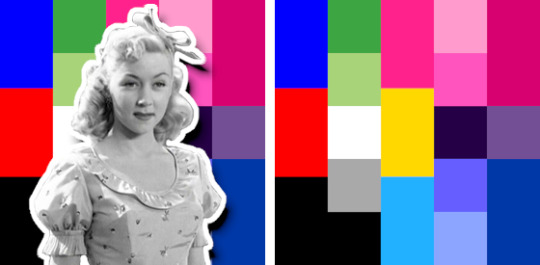


George Bailey from It’s a Wonderful Life is an autistic demiromantic straight trans man with ADHD who is canonically hard of hearing/deaf in his left ear, and his wife Mary Baiiley is an autistic neurodivergent demiromantic heteromantic greysexual bisexual trans woman with NPD! George’s friend Clarence Odbody is an autistic neurodivergent angelix angeligender angelgender queer man!
George’s Uncle Billy is a neurodivergent gay aroace man with canon memory issues, and George’s brother Harry Bailey is an abrosexual pansexual aroace man! George is also friends with Violet Bick, a polyamorous aromantic pansexual omnisexual bisexual woman, and Sam Wainwright, a polyamorous straight man!
dni transcript here
#long post#it's a wonderful life#q power#george bailey#mary bailey#clarence odbody#uncle billy#harry bailey#violet bick#sam wainwright#autism#demiromantic#transhet#trans man#adhd#hard of hearing#deaf#neurodivergent#greysexual#bisexual#trans woman#npd#angelix#angeligender#angelgender#queer#gay man#aroace#memory issues#abrosexual
21 notes
·
View notes
Text
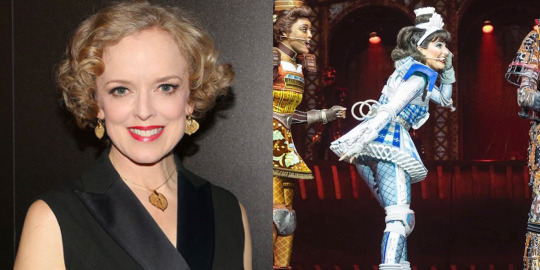
Starlight Express - Nancy Anderson (she/her) as Dinah the Dining Car, requested by anon
Birthday: April 22, 1972 (age 50)
Birth Place: Boston, Massachusetts
Theatre credits include: Lois Lane/Bianca (Kiss Me, Kate), Mona (A Class Act), Ensemble/Understudy Norma Desmond (Sunset Boulevard), George Read (1776), Violet Bick (A Wonderful Life), Bet (Oliver!), Emma Fairfax/Fox (Doctor Dolittle), Johanna Barker (Sweeney Todd: The Demon Barber of Fleet Street), Ilona Ritter (She Loves Me), Clara Oakes (A Man’s World), Little Dorritt (A Dangerous Personality)
(Pictured on the right is Rose Oullette, who played the role in the 30th anniversary Bochum production)
Credits: David Gordon, Unknown
#starlight express#kiss me kate#a class act#sunset boulevard#1776 musical#a wonderful life#oliver musical#doctor dolittle the musical#sweeney todd the demon barber of fleet street#she loves me#a man’s world#a dangerous personality#nancy anderson#dinah the dining car#lois lane#bianca minola#norma desmond#george read#violet bick#emma fairfax#johanna barker#ilona ritter#clara oakes#little dorritt
3 notes
·
View notes
Text
Violet and Harry from It’s A Wonderful Life are both snacks.
5 notes
·
View notes
Text
This is a Joan Crawford vehicle, but Gloria Grahame, aka Violet Bicks from It’s a Wonderful Life, is a supporting actress, so I’m also looking forward to that.
Tonight I’m watching Sudden Fear (1952) on the TCM app and I’m such a nerd that first I’m watching both of the two Ben Mankiewicz introductions that are included as extras.
25 notes
·
View notes
Photo

Gloria Grahame
#Gloria Grahame#Gloria Grahame Hallward#Violet Bick#actress#singer#40s#classic#b&w#b&w photography#black and white#black & white#photography#photo#portrait#gaze#eyes#dreamadot#dreamdot#HQ
13 notes
·
View notes
Text
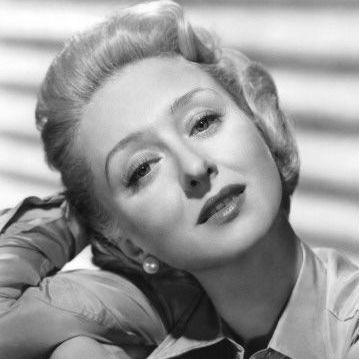

Propaganda
Celeste Holm (High Society, All About Eve)—[no propaganda beyond video clip below the cut]
Gloria Grahame (It's a wonderful life, Oklahoma, Human desire, The Cobweb)—I'm just going to link to this Film Comment article by Donald Chase, who makes the argument more eloquently than I can, although I think Grahame's Ado Annie is more than just the 'flirtatious goofus' he offhandedly describes her as. Between that role and Violet Bick in 'It's a Wonderful Life" she's played two of cinemas best irrepressibly horny ladies. That would be legacy enough for our hot vintage queen, but she is also GLORIOUS in 'In a Lonely Place' and consistently pulls focus from her co-star Humphrey Bogart, famously one of the most charismatic leading men of his day. I think she had even more, and hotter, chemistry with him than he ever had with Lauren Bacall, which is saying a lot I know. Anyway, your honor I love her and I want her to win it all.
This is round 1 of the tournament. All other polls in this bracket can be found here. Please reblog with further support of your beloved hot sexy vintage woman.
[additional propaganda submitted under the cut]
Celeste:
youtube
Gloria:

Absolute Hollywood vamp, who had a fine comedic bone. Died far too young and was depicted by Annette Bening in the stellar Film Stars Don't Die in Liverpool

I’ve heard she’s horrendously miscast in Oklahoma (I have not seen it), so if you’re coming in with that framework PLEASE set that aside because gods does this woman shine in a NOIR!! She plays the battered woman more than a full on fatale, but she manages to bring interesting nuance to characters who are written as mere sultry divergences! Also: she’s sultry and an EXCELLENT divergence
She could do sexy, sweet and sinister in the same breath. She was crazy talented and had that lisp that melts me every time.
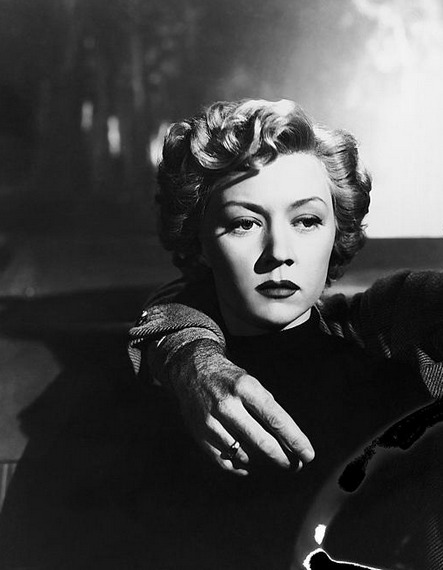
118 notes
·
View notes
Text
The submitter of Vasily Kurajin (War and Peace) who wanted him to lose badly wondered which classic characters had plant-related names in a submission and while I'm happy to contribute to your brains' stimulation, I thought I could help you out here by handing out a few names to get you started.
Submitted at least once :
Basil Hallward from The Picture of Dorian Gray
A variety of characters with made up names from Tolkien's writings
Rosaline from Romeo and Juliet
Iolanthe from Iolanthe
Daisy Buchanan from The Great Gatsby
Rosario/Mathilde from The Monk
Daisy Bell from the song of the same name
Holly Golightly from Breakfast at Tiffany
Heathcliff from Wuthering Heights
Rapunzel from the European fairytale
Submittable :
Carmilla from Carmilla
Laura Hollis from Carmilla
Susan Pevensie from The Chronicles of Narnia
Delphine de Nucingen from Old Goriot
Chloe and Alyssum/Alise from L'Écume des Jours/The Froth on the Daydream
Camille from Horace
Violet Bick in It's a Wonderful Life
Johnny Appleseed from the folktale
Fleur-de-Lys from The Hunchback of Notre-Dame
Lily Craven from The Secret Garden
Marguerite from Good Little Girls/Les Petites Filles Modèles
Konohanasakuya-hime from Japanese mythology
Arsène Lupin from Maurice Leblanc's books
Quite a few characters from Ovide's Metamorphoses/ Greek myths
9 notes
·
View notes


